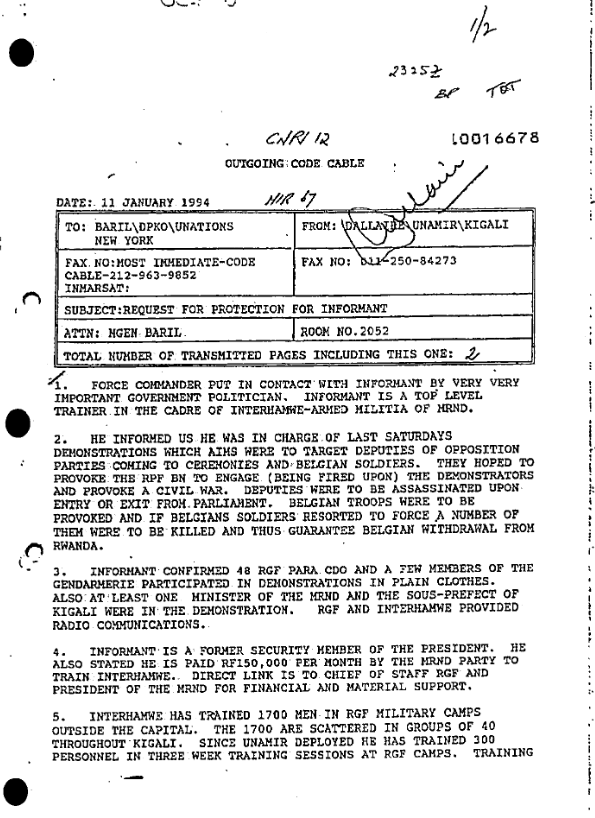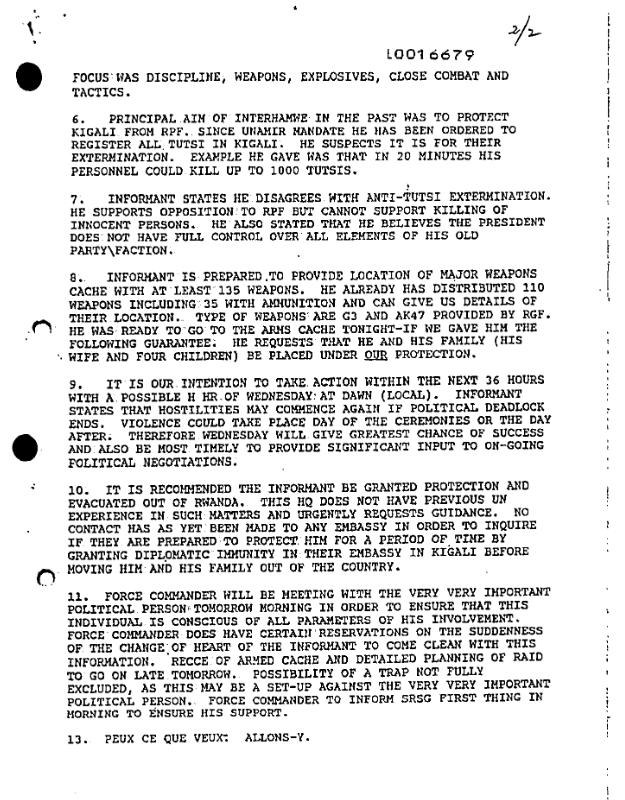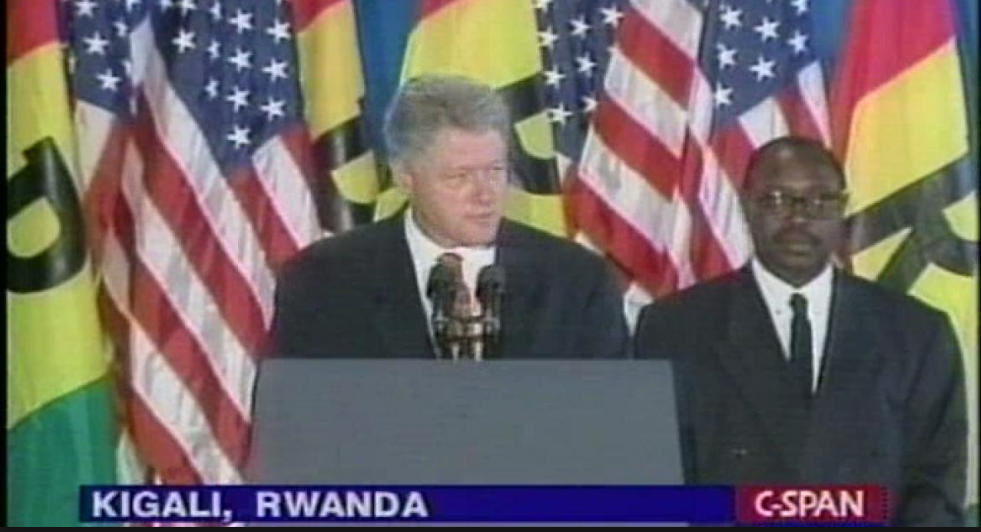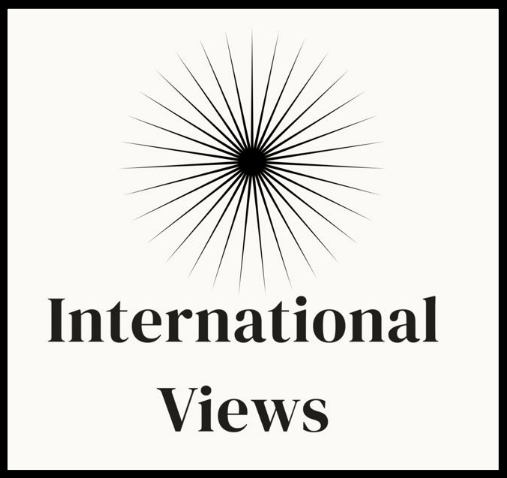The Rwandan genocide was one of the most efficient ethnic cleansing campaigns in history. Estimates place the number of Tutsi deaths at the hands of Hutu militia at between 500,000 and 1,000,000 – potentially 75% of the Tutsi population1Alison Desforges, “Leave None to Tell the Story”: Genocide in Rwanda (New York: Human Rights Watch, 1999), 6. – in the span of just one hundred days, a killing rate almost three times that of the Holocaust at its height.2Philip Gourevitch, “After the Genocide,” The New Yorker, December 18, 1995, accessed May 31, 2018, https://www.newyorker.com/magazine/1995/12/18/after-the-genocide.
The preamble of the UN Charter had quoted the horrors of World War II as a critical moral reason for establishing the United Nations in 1945, and these principles were cemented by the Genocide Convention of 1948. The international community had committed to take all possible measures to prevent history from ever repeating itself, so it is difficult to understand how the Rwandan genocide have happened just a few decades later, between April and June of 1994.
While the official statements of the main actors guiding the international community’s response claimed to be unaware of the scale of the killings, private communications show that there were widespread efforts to hide their knowledge of the crisis and to wash their hands of the problem. This wasn’t just a violation of fundamental treaties. It was a violation of the moral imperatives that had built the architecture of the international system post-WWII. The bureaucracy of international institutions was manipulated, causing a collective paralysis and the unnecessary deaths of hundreds of thousands of Rwandans.
After the partition of Africa by European countries at the Berlin Congress of 1884, Germany, and later Belgium, placed the lighter-skinned minority Tutsi in colonial administrative roles as they were believed to be racially superior to the dark-skinned Hutus, leading to an imbalance of power and wealth along ethnic lines.3Helen M. Hintjens, “Explaining the 1994 Genocide in Rwanda,” The Journal of Modern African Studies 37, no. 2 (1999): 250. The paper also presents an interesting discussion of whether these ‘ethnic’ divisions were constructions or explicitly racial. Following the Rwandan revolution in 1962 an independent Hutu-governed state was formed, resulting in numerous Tutsi purges. A 1973 coup led to Juvenal Habyarimana (Hutu president of Rwanda in 1994) acceding to power.
Displaced Tutsis in Uganda formed the Rebel Patriotic Front (RPF), later commanded by the current president, Paul Kagame, and marched into Rwanda in 1990, starting the Rwandan Civil War. The internationally brokered Arusha Accord hoped to establish a power-sharing government in 1993, but the talks broke down after protests by Habyarimana.
With ethnic tensions running high after the failed negotiations, on April 6th, 1994 the Rwandan presidential plane was shot down over Kigali in mysterious circumstances, killing both Habyarimana and the Hutu president of Burundi. This sounded the starting shot for the bloodshed that followed.
Documents show how all parties knew of the impending danger of ethnically motivated killings as well as the scale of the massacres once they were underway. On January 10th General Romeo Dallaire, head of the UN peacekeeping force in Rwanda (UNAMIR), sent what has come to be known as the ‘Genocide Fax’ to the United Nations head office and the Department of Peacekeeping Operations.


An insider informant had warned him that a mobilisation of government militias (the Interhamwe) was occurring for ethnic “extermination. [The] example he gave was that in 20 minutes his personnel could kill up to 1,000 Tutsis.”4“Request for Protection for Informant,” Romeo Dallaire to the United Nations Department of Peacekeeping Operations, January 11, 1994, 2, available at: https://www.documentcloud.org/documents/816325-19940111a2-unam-rwdp.html. Daillaire also requested protection for the informant, which was not granted;5“Contacts with Informant,” Kofi Annan to UNAMIR, Kigali, January 10, 1994, 1, accessed May 31, 2018, https://www.documentcloud.org/documents/894524-19940110c-un-rwdp.html. his fate is unknown. His increasingly desperate cables indicated that preparation for a full-fledged conflict was underway (February 2nd), and that deterrent operations were needed (February 15th).6“Cables from Romeo Dallaire,” The United States Holocaust Memorial Museum, accessed May 30, 2018, https://www.ushmm.org/m/pdfs/20140110-cables-from-romeo-dallaire.pdf.
The Belgians were the only well-equipped soldiers under the General, and by March a government official had already stated that “if conditions deteriorate, the U.N. and Belgium could not really allow themselves to withdraw from Rwanda,” already using the term ‘genocide’ to describe the situation.7Desforges, “Leave None to Tell the Story,” 133.
Despite this, after the death of ten of their soldiers on April 7th and with no additional UN support approved, Belgium recalled its contingent. Two weeks after April 6th, when the extermination campaign had begun, Daillaire asked for the UNAMIR mandate to be altered from a UN Charter Chapter VI to a Chapter VII operation (non-military to military).8“The Military Assessment of the Situation as of 17 April 1994,” Romeo Dallaire to United Nations New York, April 17, 1994, 6. This was also not granted, meaning that the UN contingent could not fire a single bullet to stop the massacres happening in front of them.
As the genocide was reaching to a close on June 20th, a dejected Daillaire would write:
War and anarchy (…) has resulted in the death of hundreds of thousands of non-combatants (women and children) mostly of the Tutsi ethnic group. (…) The ineffective reaction to meeting the critical needs of the Mission in order to implement its mandate has been nothing less than scandalous.”9“An Assessment of the Proposed French-Led Initiative in the Rwandese Crisis,” Romeo Dallaire to Kofi Annan, June 20, 1994, 13.
…
The United States was also privy to the scale of the killings. They not only had an active aerial reconnaissance mission in Rwanda at the outbreak of the genocide,10Runway Blocked,” National Photographic Interpretation Center to the White House Situation Room, April 7, 1994, in the National Security Archive. but they also established a task force the next day to maintain ongoing contact with personnel on the ground to monitor the unfolding situation. This was forwarded to all diplomatic missions, the Department of State, and the Joint Chiefs of Staff.11“WGR01: Working Group Formation to Deal with the Situation in Kigali and Bujumbura,” Harry R. Melone to the United States Department of State, April 8, 1994, in the National Security Archive.
On April 19th, internal cables between the US representative for humanitarian affairs and the National Security Council began using the term ‘genocide’.12Pull-out of UNAMIR,” Eric P. Schwartz to Susan E. Rice, Donald K. Steinberg, April 19, 1994, in the National Security Archive. As the situation progressed, a May 20th memo to the National Security Advisor spoke of the “killing of over 100,000 people over the past month”13“Discussion Paper for the Deputies Committee on Peacekeeping Options in Rwanda,” Mark Grossman to Executive Secretary, National Security Council, May 16, 1994, in the National Security Archive, 5. and of “government forces unable to control mass killings of Tutsis.”14Ibid., 6.
A June 14th memo from the US National Security Council to the president is particularly telling of US policy. The document contained suggested talking points for the president in dealing with the press, and about what terminology to use:
It would do the President well to stand up himself and say that genocide has occurred in Rwanda. Period. He is in the unique position to break through the goobledy-gook that the rest of us are required to say. If he does it, it will make it seem like he himself is frustrated over the bureaucracy’s inability to call a spade a spade – that would be a good thing…We have addressed below the question of what obligation that entails.15“Points for POTUS with Members,” Donald K. Steinberg to Jeremy Rosner, June 14, 1994, in the National Security Archive, 1.
These guidelines demonstrate an ongoing reticence to use the term ‘genocide’. They also indicate that government officials were required to use evasive language, that there was a need for the president to appear frustrated about the situation, and that there would be obligations tied to using specific terminology.
Despite extensive evidence to the contrary, the central powers that directed the international community’s response to the crisis consistently claimed retrospective ignorance. U.S. President Bill Clinton, speaking in Kigali in 1998, told Rwandan survivors that “all over the world there were people like me sitting in offices, day after day after day, who did not fully appreciate the depth and the speed with which you were being engulfed by this unimaginable terror.”16William J. Clinton, “Text of Clinton’s Rwanda Speech,” CBS News, March 25, 1998, accessed June 2, 2018, https://www.cbsnews.com/news/text-of-clintons-rwanda-speech/.
UN Secretary General Kofi Annan stated the following in 1998: “Looking back now, we see the signs which then were not recognised.”17Kofi Annan, “Mission of Healing to Rwanda,” Press Release SG/SM/6552, AFR/56 (May 6, 1998). He had been the head of the Department of Peacekeeping Operations in 1994, the main point of contact for UNAMIR – and thus the direct recipient of General Dallaire’s cables, and was addressed by name on multiple occasions. In similar vein, a 1998 French Parliamentary Commission on Rwanda found that “it would be excessive to say that the Embassy services were aware (…) of the risk of genocide. This same attitude is reflected in the lack of UN reaction during the genocide.”18Il serait excessif de dire que les services de l’ambassade étaient conscients (…) du risque de génocide. Cette même attitude se retrouve à travers l’absence de réaction de l’ONU durant le genocide.”The French Republic, Assemblée Nationale, Mission D’information Sur Le Rwanda, Rapport D’information, by Paul Quilés, Rapport N° 1271, VI.2.e.
The numerous post-factum explanations and the guidelines discussed in President Clinton’s press briefing clearly illustrate a refusal to acknowledge their awareness of the mass killings. White House staff were required to use ‘goobledy-gook’, as ‘obligations’ would have been triggered compelling the United Nations and member states to provide material support. This is why such focus is placed on language in the memo: the simple act of avoiding terminology tied to specific bureaucratic procedures provided enough legal cover for international treaties to be ignored.

The two treaties that codified the definition of genocide and the international community’s responsibility in response to breaches of the accords are the United Nations Charter and the Genocide Convention, adopted in 1945 and 1948 respectively. Articles II and III of the Convention articulate a definition of genocide as “acts committed with intent to destroy, in whole or in part, a national, ethnical, racial or religious group;”19The United Nations, General Assembly, Convention on the Prevention and Punishment of the Crime of Genocide (New York: United Nations, 1948), 280. punishable offenses included not only the crime itself, but “conspiracy” to commit such crimes, “direct and public incitement,” “attempts,” and “complicity” in genocide.20Ibid.
Article VIII of the Convention commits members “to take such action under the Charter of the United Nations as they consider appropriate for the prevention and suppression of acts of genocide or any of the other acts enumerated in article III.”21Ibid., 282. This action is what General Dallaire was referring to, enacting UN Charter procedures given the situation in Rwanda and shifting from a Chapter VI to a Chapter VII mandate.
Chapter VI outlines procedures for the “pacific settlement of disputes,”22The United Nations, Charter of the United Nations and the Statute of the International Court of Justice (San Francisco: United Nations, 1945), 8. while moving to a Chapter VII would commit to “make available to the Security Council, on its call and in accordance with a special agreement or agreements, armed forces, assistance, and facilities, including rights of passage, necessary for the purpose of maintaining international peace and security.”23Ibid., 9.
This explains the reluctance to call the violence a genocide. It would have entailed a recognition of the 1948 Convention, which would call back to the UN Charter and initiate procedures to respond to the crisis. Refusing to acknowledge the situation in Rwanda allowed for potential Security Council measures to be stalled, and the procedural nature of the UN system was instrumentalised to block and delegitimise actions that could have led to intervention.
Contemporary documents regarding Security Council debates paint a picture of an international community that was aware of the offenses yet either openly opposed to intervention, or unable to intervene due to that same opposition: the day Habyarimana’s plane was shot down the U.K. representative to the Security council sent a cable to the Home Office, reporting that the U.S. proposed to completely terminate the UNAMIR mandate if no progress was made in implementing the Arusha Accord.24“TELNO 1216,” United Nations U.K. Mission to The Home Office, April 6, 1994, in the National Security Archive, 1.
After the floodgates of slaughter were opened not only did the U.S.’ stance not change, but additional steps to wash their hands of the situation followed. They even refused to use radio-jamming technology at their disposal to disrupt local radio stations that were instrumental in inciting the Interhamwe massacres of Tutsis, presumably because it would have exposed their knowledge of the situation, compelling them to act.
The American representative to the Security Council, Madeleine Albright, sent the following cable to the administration and relevant embassies on April 11th: “It is worth considering taking the lead in the Security Council to authorize the evacuation of the bulk of UNAMIR, while leaving behind a skeletal staff that might be able to facilitate a cease-fire.”25“TFRWOL: Future UNAMIR and French Roles in Rwanda,” Madeleine Albright to the White House, relevant agencies, and diplomatic Missions, April 11, 1994, in the National Security Archive, 2. Skeletal indeed, as many Tutsi local staff were left behind by governments and international insitutions to face the genocide; and with all the information available to her, it is hard to believe that Albright thought that a small, unsuppported team could negotiate a cease-fire. So not only was support blocked, with Resolution 912 the Security Council voted to reduce the UN contingent from 2,000 to a mere 270.26The United Nations, Security Council, Resolution 912 (New York: United Nations, 1994), 3, accessed June 9, 2018, https://undocs.org/S/RES/912(1994).
The downsizing of the contingent happened despite the Security Council president, Colin Keating of New Zealand, stating the day before Resolution 912 that “it was becoming increasingly difficult to explain credibly why in the face of the most horrific killings the Council could remain formally silent.”27“Security Council: Rwanda,” Colin Keating to Security Council Diplomatic Missions, April 20, 1994, in the National Security Archive, 1. The Czech representative to the Security Council was wholly dismissive of the possibility of implementing the Arusha Accord: “Is this not as though we wanted Hitler to reach a ceasefire with the Jews? (…) The proportions are the same.”28“Document 2657,” Karel Kovanda to the Foreign Ministry of the Czech Republic, April 25, 1994, in the National Security Archive.
These statements point to a vocal minority in the Security Council dismayed by the actions the institution was taking. Before Keating’s presidency ended on the 30th of April, he drafted a resolution which explicitly called the crisis a genocide, backed by non-permanent members New Zealand, the Czech Republic, Argentina, and Spain. This was supported by the Organisation of African Unity, spearheaded by Nigeria, which had consistently requested supplies and support to their ill-equipped contingent in Rwanda.29“Outgoing Cryptofax 1451,” Chinmaya Gharekhan to the United Nations Secrety General, Geneva, May 5, 1994, in the National Security Archive, 1.
Instead, the proposal was “vehemently opposed by the representatives of the United States, United Kingdom and China who resisted the use of the word ‘genocide’ since it would have bound the members of the Security Council legally and morally to act in terms of the Convention on Genocide.”30Hazel Cameron, “British State Complicity in Genocide: Rwanda 1994,” State Crime Journal 1, no. 1 (Spring 2012): 78. This adds a further consideration to the actions of the international community: there were member states on the Security Council or with committed troops on the ground that clearly saw the moral need to act but were bound by the strictures of international institutions.
The result was a tragically banal situation of a stalled bureaucracy unable to save the lives of hundreds of thousands over a punctilious use of legalistic terminology.
The Security Council only began to act materially with Resolution 918 on May 17th authorising the expansion of forces to a contingent of 5,500 troops,31The United Nations, Security Council, Resolution 918 (New York: United Nations, 1994), 3, accessed June 10, 2018, https://documents-dds-ny.un.org/doc/UNDOC/GEN/N94/218/36/PDF/N9421836.pdf?OpenElement. Resolution 925 of June 8th formally referring to the crisis as a genocide and “recalling in this context that genocide constitutes a crime punishable under international law,”32The United Nations, Security Council, Resolution 925 (New York: United Nations, 1994), 1, accessed June 10, 2018, https://documents-dds-ny.un.org/doc/UNDOC/GEN/N94/244/54/PDF/N9424454.pdf?OpenElement. committing two additional battalions,33Ibid,2. and Resolution 929 of June 22nd establishing a “temporary multinational operation for humanitarian purposes in Rwanda until the deployment of the expanded UN Assistance Mission for Rwanda”34The United Nations, Security Council, Resolution 929 (New York: United Nations, 1994), 1, accessed June 10, 2018, https://documents-dds-ny.un.org/doc/UNDOC/GEN/N94/260/27/PDF/N9426027.pdf?OpenElement. and a Chapter VII mandate.35Ibid., 2.
This would have been effective were it not for the fact that by July 25th the UNAMIR contingent stood at under 500 soldiers,36Department of Public Information, United Nations, “United Nations Assistance Mission for Rwanda,” accessed June 11, 2018, http://www.un.org/Depts/DPKO/Missions/unamir_b.htm one-tenth of those that had been pledged over two months before. The RPF had already captured Kigali by July 4th and halted the killings unaided, finally establishing a government comprised by individuals that had participated in the Arusha Accord.
…
The genocide could have been contained or entirely prevented. A 1999 independent UN inquiry found that a “force numbering 2,500 should have been able to stop or at least limit massacres of the kind which began in Rwanda after the plane crash”37The United Nations, Security Council, Report of the Independent Inquiry into the Actions of the United Nations During the 1994 Genocide in Rwanda, by Ingvar Carlsson, Han Sung-Joo, and Rufus M. Kupolati (New York: United Nations, 1999), 30. on April 6th. The international community was aware of the risk of genocide and had access to direct and ongoing information about the situation, but instead chose to decrease the UNAMIR contingent.
Measures to trigger the 1948 Genocide Convention procedures were consistently blocked, curtailing any ability of willing UN members to provide support. When aid was finally approved by the Security Council it was not delivered, allowing for the genocide to continue for another month and a half at an estimated 8,000 deaths per day.
The international community didn’t fail to act because they were unaware of the scale of the massacres. Rather, a successful campaign was led to refuse to act, and ignorance was retrospectively claimed in order to appear not to have violated foundational international treaties. Influential states manipulated institutions according to their interests and in doing so, they paralysed other member states to inaction, resulting in the overall failure of the international system’s response.
Little responsibility was ever taken for these failures: in 1997, Kofi Annan barred General Dallaire from appearing before a Belgian hearing on Rwanda as it was not “in the interests of the organisation.”38Howard Adelman, The Role of Non-African States in the Rwandan Genocide, Centre for Refugee Studies, York University, June 23, 2009, 33, accessed June 11, 2018, http://hdl.handle.net/10315/2662. Dallaire’s January 11th ‘Genocide Fax’, the first clear presage of was to come, had ended with the words “PEUX CE QUE VEUX: ALLONS-Y,”39“Request for Protection,” Dallaire, 2. or where there’s a will, there’s a way: let’s go. He was ironically accurate: there wasn’t a will, so there wasn’t a way – nobody went.

